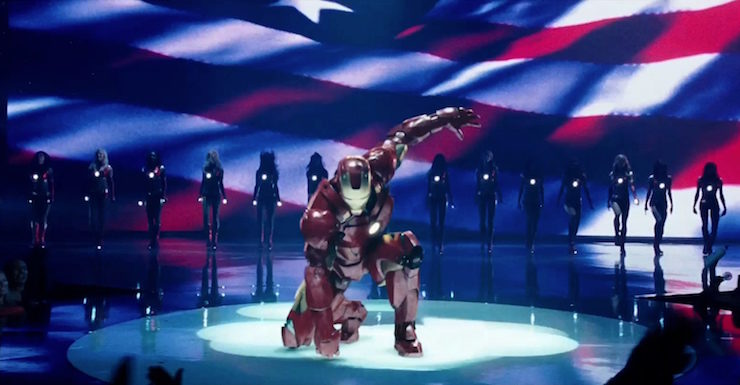In the early 20th century, musicals were theater productions. In the early 21st century, superheroes lived mainly in comic books. Both managed to make the leap into the medium of film, with a few stumbles on the journey, and they wound up creating entirely new film genres in the process.
The creations of the two film genres mirrored each other, and both can offer lessons to anyone wondering how a genre changes when it successfully switches mediums. In other words: Video game movie producers, start taking notes now.
Wait, I Should Define Something Here…
Before we dive in, I should clarify what I mean by “superhero film.” You’re welcome to disagree, and I fully expect that discussion to be eighty percent of the comments section, but for the purposes of this essay, a film with superheroes in it is no more a capital letter Superhero Film than a film with music in it is automatically a musical.
What’s the bright-line? I’d define it as the point when the films’ raison d’etre shifted from the director’s vision or an actor’s showcase to a pronounced focus on the characters and stories from the comics themselves. In many early cases, directors had a clear disdain for their four-color source material. As Keith DeCandido has pointed out here on Tor.com, the director of the 1977 TV movie The Incredible Hulk held a “stated contempt for the comics medium.” And, as great as they are, the previous iterations of the Batman franchise were Tim Burton or Christopher Nolan movies first and Batman second. By my estimation, the new era of comic books as a bankable concept in Hollywood (and as a true synthesis of comics and film) was heralded by the X-Men and Spider-Man trilogies of the 2000s, and truly began in earnest with 2008’s Iron Man. After the worlds of the MCU, DCEU, and 20th Century Fox’s X-Men established the superhero film as a genre unto itself, all the classics from decades earlier were ret-conned into the descriptor. This essay looks at that modern era of superhero film… or, it will after we flash back about ninety years to talk about the birth of film itself.
Early Hollywood’s Musical Problem
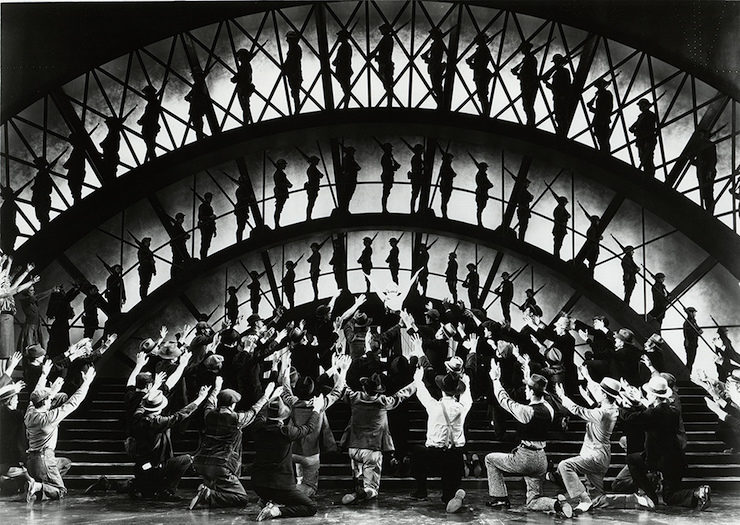
Songs reigned during the transition from silent film to talkies in the late ‘20s and early ‘30s, thanks to producers’ assumptions that talking was a distraction unless it was melodic enough to justify a whole musical number. Eventually Hollywood got behind on-screen dialogue—they clearly recognized how well audiences responded to the ad-libbed ramblings Al Jolson offered while the mic was on between songs in 1927’s The Jazz Singer, which remained an otherwise silent film apart from the isolated musical sequences.
Still, just because song and dance numbers were staples in film early on doesn’t mean they captured the same magic as a live performance. Hollywood was facing the problem faced by any storyteller seeking to transpose an old medium into a new one: they needed to invent the guidebook as they went along.
Technical innovations led to incremental improvements. Tinny microphones were improved. Sound engineers were invented. The time-saving concept of lip-syncing to a sound studio recording of an actor’s song caught on. But the biggest innovation needed wasn’t about the quality of the sound, but rather how the scenes themselves were presented…
Imagine for a moment that you’re trying to enjoy a live musical number, perhaps at an opera house or nightclub. Even if you picked the worst seat in the house, you have viewing options that are unavailable on film. You can turn your head away from the main action to see what a bit player is doing, or even just peek at fellow audience members to judge whether they’re paying attention.
It’s a benefit of a live musical that no film can replicate short of a VR headset. On film, the static camera offers just one flat viewpoint at a time, and in early musicals, barely moved for the entire length of a song. During one exemplary scene in 1929’s The Love Parade, the most energy the camera can muster is a single cut and a pan that travels about a yard from a bed to a chair.
One slim, bushy-browed cinematographer named Busby Berkeley holds the credit for cracking the problem with an insight that quickly became essential to any musical film: he made the camera itself a dancer. His roving camera in the 1930 western musical Whoopie! first pioneered this radical approach by focusing on the dancing cowgirls from a variety of angles and positions rather than presenting the tight chorus line a static camera or live stage would have needed to make sense of the scene. Berkeley custom-built the booms and monorails he needed to breathe life into the dance numbers, and in hits like 1933’s Forty Second Street used the technique to capture the sensory overload of the eponymous bustling city street. By telling stylish musical stories unique to film, he cemented his legacy in musical history.
Berkeley’s camerawork isn’t universally beloved—some find it so busy that it obscures and distracts from the dancing itself—but it remains a perfect example of how to move a type of story from one medium into another. Both the new and the old mediums have unique traits, and any adaptations must find a way to use the tricks specific to the new medium to capture the magic found in the old medium.
And if done well, those tricks that translate and express the original medium’s energy will be echoed and remixed across the new medium like a game of tag. Berkeley’s creative influence can be found more than just musicals. Even today, when cinematographers opt for a dynamic long-take to showcase an athletic performance, it will inevitably be compared to a dance number—just ask Keanu Reeves, who has noted that the fight scenes in the John Wick franchise are “almost like a dance.”
In the early years of the 2000s, Hollywood began walking a similar tightrope between two mediums. To emerge as their own genre, superhero films needed to adapt the comics medium just as musicals had adapted musical theater. Stanford film and media professor Scott Bukatman has made the comparison before in a 2011 essay, saying,
Superhero films remain something of a provisional genre, still very much in a state of becoming. In a way, I feel like an aficionado of Broadway musicals pontificating on the inadequacy of the film musical in 1930: this was a time of ponderous, static films with lousy sound reproduction, but one of the most dynamic of film forms would emerge a scant three years later.
While Bukatman no doubt remains skeptical of the superhero genre—his essay criticizes how “nearly identical” the glut of 2000-era superhero films are, and that aspect of them hasn’t improved any since—I would make an opposite argument. I think the superhero film as a genre has cherry-picked just the right tricks to reflect its comic book heritage and stand alone as a new form of film, and has achieved incredible success in the process. I’m just not so sure the result makes for great films.
The Shared Universe
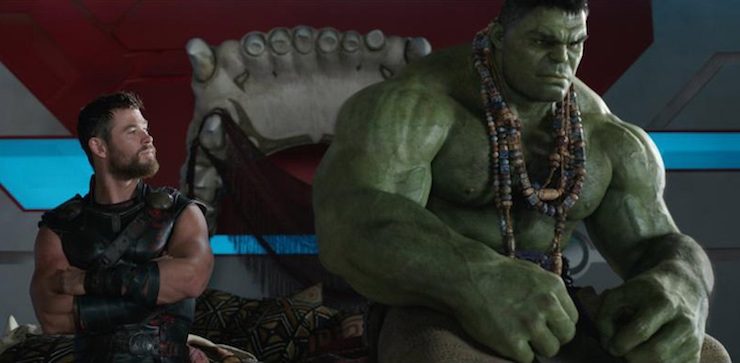
The Silver Age of comics—the late 50s to the early 70s—was a relatively silly time. Shaped by the censoring hand of the Comics Code Authority, the era birthed enough family-friendly figures, from Spider-Man to the Black Panther, to fill dozens of PG-13 blockbusters. The goofy tone was bolstered by Stan Lee’s caption boxes, which peppered issues with asterisked notes guiding readers to a second issue featuring a character name-checked in the first; yes, these were the first superhero Easter eggs.
The shared universe has been essential to comics since the original Justice League of America showed up in 1960, and Marvel quickly followed suit, debuting their own superhero team, the Fantastic Four, a year later.
Just as the musical rapidly evolved, the modern superhero film, in its most recent, hugely successful CGI blockbuster form, has noticeably leaned into its own shared universe strengths within a span of just a few years. Marvel’s Phase One films were the prototypes for a shared universe, the evidence of which was at first relegated to post-credit teaser scenes and two grafted-on intros for Hawkeye and Black Window in Thor and Iron Man 2, respectively. Then The Avengers was a triumph, and Marvel began to weave its network of heroes even tighter. Films in the 2017 shared universe can now co-star Tony Stark and Peter Parker or throw the Hulk into outer space for a movie with Thor. It feels exactly as though Marvel is repeating a strategy it pioneered on cheap pulp in March of 1972, when Spider-Man and the Human Torch graced the cover of Marvel Team-Up #1. The logic is simple addition: if people like one superhero per film, they’ll love two or more at a time.
Marvel Studios is the current undisputed king in terms of successfully building a connected cinematic universe. The DC Extended Universe is eating its dessert first, doling out most of its solo films for players like Batman and Cyborg after the big events like Batman vs. Superman or the upcoming Justice League. Marvel, meanwhile, has saved its Guardians of the Galaxy/Avengers team-up until summer 2018. When the shared universe works, it works for the same reason the comics succeeded in the first place, by building a world packed with heroes who can each carry a story, then essentially gamifying the entire universe by making each story part of a larger puzzle.
It also means that dedicated fans of these characters can’t miss a puzzle piece, which brings us to the second trick superhero films cribbed from the comics…
Hyper-Serialization and the “Illusion of Change”

“Orbiting the Earth on a spaceship” is “the only reason for a true spidophile’s copping out” by missing the previous issue, according to the lurid caption introducing 1966’s Amazing Spider-Man #40 in a prime example of the survival mechanism that comics relied on to catch a kid’s eye at the local drug store: heavy serialization.
But how could an overworked writer keep churning out an issue every single month while making sure never to arrive at an ending? Simple: Create the illusion of change without actually allowing characters to evolve.
The term “illusion of change,” as defined by Alan Moore in a typically prickly essay, refers to the decision to keep a character going through the same beats as before, a “pale echo” of their past self, while continually changing relatively minor details—Iron Man gets a new suit, the Hulk leaves the Avengers, Thor gets a haircut.
Mainstream comics have long suffered as the result of this philosophy. While the biggest example from the last decade is probably the universally hated “One More Day” story arc that saw the marriage between Peter Parker and Mary Jane erased from existence by a literal deal with a devil, the 1973 death of Gwen Stacy was actually driven by Marvel editors’ opinions that it was the only way to avoid marrying Peter off. Both times, Peter was left as a “relatable” single guy.
Superhero films will occasionally feint at change in a similar way. Remember when Tony Stark drove away at the end of Iron Man 3 claiming he was no longer Iron Man…only to show up in Age of Ultron literally in his suit from the first minute? I was excited for Civil War, which seemed like a solid attempt to shake up the typical format by pitting the heroes against each other, but even that movie couldn’t end without Steve sending Tony a letter to tell him they were still relatively cool with each other. In its efforts to keep the gravy train rolling smoothly, the modern superhero film can’t risk shaking up the future with, say, a marriage, or a lasting schism between its leads.
Limited Character Arcs and Greater Likability
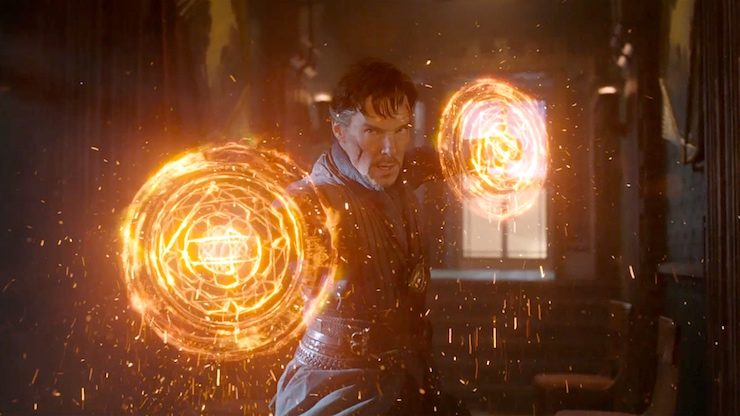
The illusion of change may be the result of serialization, but it comes with its own set of consequences and drawbacks: a plot with nothing major at stake for the main protagonists, and characters who never truly evolve. Given that these plot and character-related elements are normally considered essential to a propulsive story, superhero films need to rely heavily on a variety of new tricks in order to compensate.
Mainstream superhero comics have a similar problem, and have relied on shocking moments or big events to compensate, with varied results. In this arena, the superhero film has an edge over its comic book source material, as it can rely on ever-more impressive CGI to create trippy microverses and multiverses while avoiding the less market-testable character arc.
Remember when I mentioned that the recent spate of superhero films have been called “nearly identical”? They tend to feature thinly-drawn villains, character deaths that don’t stick, and a steady drip of action scenes building to a climactic (and inevitable) CGI slugfest.
The superhero film hasn’t always been quite so formulaic, of course: the original trilogies of the X-Men, Nolan-era Batman, and Raimi-era Spider-Man all stand or fall on their own merits as movies with traditional character arcs. Even Marvel didn’t always keep its characters as static as it now does. In their first movies, Steve Rogers started out scrawny, Tony Stark was a weapons dealer, and Thor was an unworthy, arrogant jock. But once the origin stories had been dispensed with, the characters were locked in to the format, and Marvel began to subtly hone their approach. Tony can create Ultron, act as though he’s learned a lesson, and then be vindicated by creating Vision through essentially the same process. Peter Parker can flake on his date two or three times, including abandoning her at Homecoming, and she’ll let him off with a kiss on the cheek. To compensate for the limited range of the characters themselves, of course, the actors portraying them are highly likeable—Robert Downey Jr. is wryly charming, Chris Pratt is goofily charming, Tom Holland is awkwardly charming, etc.
The current superhero film will often adapt the veneer of a different genre in order to distinguish itself from the pack, but never feels the need to change anything about its basic structure when a new set design and some stunt casting will do the trick. While Winter Soldier pretended to be a throwback to 70s-era political thrillers, it avoided plumbing that genre’s essential core of troubling moral ambiguity by simply giving all the villains their own secret club by the end.
Doctor Strange is perhaps the best example of the problem—it doubles down on doing everything that a superhero film does well without paying much attention to what makes a good film. It packs in jokes, even when they undercut the tension that should drive the story, as when the magical cape shows up and starts moving by itself while Strange confronts his nemesis—it’s funny and delightful, but ruins the tone of deadly menace that the first hero-villain face-off should carry. The film also features consistently jaw-dropping action scenes even when the story might work better without them, as when the Ancient One hops into a psychedelic mirror dimension three minutes into the film, when the stakes aren’t established and our hero doesn’t even believe in the magic that he’ll use in his own mirror dimension fight scene eighty minutes later. Yet it’s all so fun throughout that no one really minds that the plot is an obvious retread of Iron Man.
It’s a fatal flaw if you care about story structure. But for the most part, critics and audiences alike genuinely love it. Marvel has successfully turned its superhero films into delivery systems for jokes, action, and set-pieces, each garnished with a tease that sets up the next. And at this point, that formula isn’t just limited to superheroes, anymore…
Why the Superhero Model Is Eating Hollywood
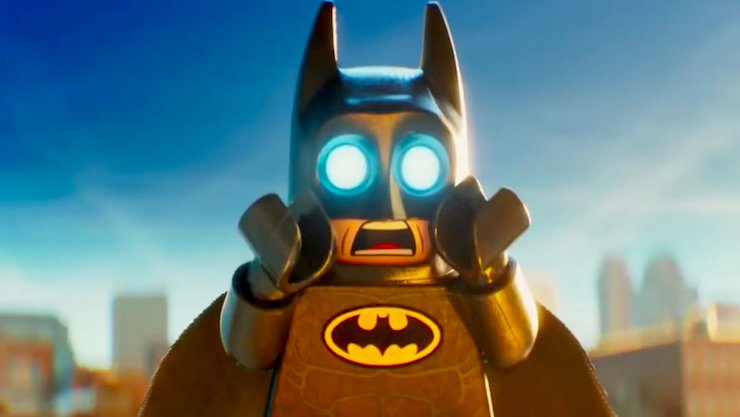
Just as the movie musical’s tricks have filtered down and been incorporated into the production and cinematography of all manner of films, the comic book movie’s tricks have been adapted by every major film franchise. Writing for Grantland in 2014, Mark Harris pinpointed the future of the blockbuster franchise, saying, “Movies are no longer about the thing; they’re about the next thing, the tease, the Easter egg, the post-credit sequence, the promise of a future at which the moment we’re in can only hint.” Franchise films, like comics themselves, must churn out steady installments and, like comics, they’ve turned enthusiastically to team-ups and serials to attract audiences in recent years.
The latest few Star Wars films, Fast and Furious installments, and even Disney Princess movies all channel the same market-tested vein of ultra-watchable peppy weightlessness. Shared universes can include any intellectual property, not just superheroes, from effortless successes like The LEGO Movie and Wreck-It Ralph to misfires like Universal’s Monsterverse. And rock-steady plot mechanics are moving lower on the priority list to make room for something Awesome-with-a-capital-“A”, like the Rock flexing the cast right off his arm or another Darth Vader cameo.
The question of whether comic book movies can really be blamed for modern films’ increasing reliance on serialization is like the chicken-or-the-egg question: producers realized the same franchising common in comic books would work for them around the same time they started making more comic book movies. Why not? It works. The only non-franchise film in the top 20 highest grossing movies of 2016 was La La Land.
One final note: the modern Hollywood blockbuster aims for spectacle to draw in audiences, and tends to forget the essentials of plot and character arcs in the process. But that doesn’t mean I can’t enjoy them. As much as I love examining the formal scaffolding underneath musicals and comic book films, sometimes it’s fun to just sit back and watch Thanos lob a moon at all the Avengers. And it doesn’t mean the blockbuster is a lost cause, by any means—plenty of beloved musicals have the exact same weakness for plotless, happy-go-lucky showstoppers. (I dare you to locate a single character beat in “Supercalifragilisticexpialidocious.”)
The blockbuster’s box of tricks could come from any medium, and could coalesce into a masterpiece or a dud. The impact of comic books on film will, for better and for worse, continue into the foreseeable future. It’s possible that these tricks will continue to evolve until Hollywood comes out with a film that’s both a successful comic-book blockbuster and a true masterpiece of cinematic art. We’re not there yet—but we’re definitely closer than we were ten years ago.
Adam Rowe is a freelance writer and he wants you to watch this. You can also check out his newsletter if you’re interested in how storytelling shapes culture, or @ him on Twitter if you’d prefer to explain to him why he’s wrong about everything in this essay.










